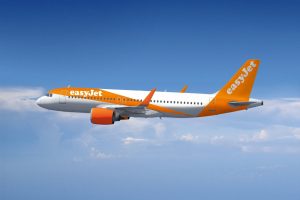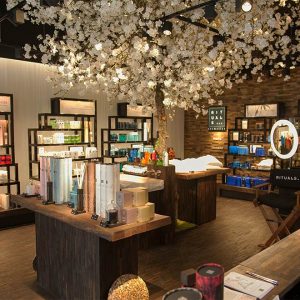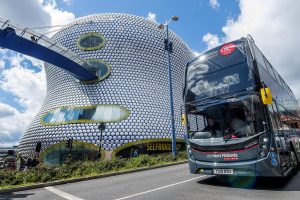SPECIAL REPORT: Farewell to a Legend as Land Rover ends Defender production

THE last Land Rover Defender rolls off the production line at Lode Lane in Solihull today bringing the curtain down on a motoring legend. Duncan Tift looks back over the last seven decades of the vehicle that progressed from farming runaround to Royal favourite.
THE term ‘icon’ is over-used in modern English – I know this because as a journalist I’m guilty of hyperbole on a regular basis. However, today I am confident I can apply the epithet with absolute certainty and the icon in question is the Land Rover Defender.
Today marks the end of an automotive success story stretching all the way back to the austere days of post-war Britain when an enterprising automotive engineer named Maurice Wilks drew a sketch in the sand on a North Wales beach of a simple utilitarian vehicle he could use to drive around his Anglesey farm.
At the time he was using an old American Willys Jeep for the farmwork but when his brother Spencer came to visit, the pair put their heads together and came up with the basic four-wheel-drive runaround that would eventually evolve into one of the best-selling vehicles of all time, with more than two million sold.
And despite several revisions over the years, the Defender which rolled off the Lode Lane production line today shares much in common with that original vehicle, demonstrating perhaps that the best design is often the most simple.
Wilks’ strategy was a simple one; to create a vehicle that would tackle any terrain thrown at it. This principle has been at the forefront of the Land Rover brand ever since that first sketch in the sand and it is an ethos that has helped to spawn future generations of the Best 4×4 By Far.
To counter the shortage of steel in post-war Britain, the Wilks brothers opted to clad the Land Rover in aluminium alloy, which was in plentiful supply and had the added benefit of being lightweight and resistant to corrosion.
.jpg?access=667T026T840)
The famous Land Rover oval logo has undergone many changes in its 68-year history. The original inspiration is said to have come from a pilchard tin. Part of a designer’s lunch, it left a mark on his drawing board which he copied for the vehicle’s badge.
As first introduced, the Land Rover was available only as an open utility vehicle with a wheelbase of 80 inches and a launch price of £450. To target the vital agricultural market, power take-offs could be fitted to enable the car to drive farming equipment. Specialist vehicles in the shape of a fire engine and mobile welder were soon developed.
What had once been considered as a stop gap until Rover could introduce a new post-war car, ended up being produced in greater numbers than the Rover themselves – an event anticipated by the board as early as November 1948.
An early attempt at building a more comfortable Land Rover came in 1948 when the first seven-seater station wagon, with a coachbuilt body by Tickford, was introduced. In the UK, it attracted Purchase Tax, from which the utility version was exempt. This made it very expensive, restricting its success in the UK, although many were sold overseas. The basic vehicle was also exported to the USA, generating crucial dollar revenue needed to repay Britain’s war debt.
The first year’s production was only 1,758 vehicles but rose rapidly to 12,395 in 1949 and 16,795 in the following year. By the Land Rover’s 10th anniversary, production had topped 25,000; it was nearly 47,000 in 1968.

In 1950, the permanent four-wheel drive system was replaced by a more conventional selectable arrangement. Four-wheel drive was engaged in low range and could also be selected in high range when required. Two years later the relatively underpowered 1.6-litre engine was replaced by a 2.0-litre unit.
More than 200,000 Series I Land Rovers had been made when the 10th anniversary was marked in 1958 by the launch of the Series II model; recognisable by its restyled body with side sills and rounded shoulders in the side panels. The petrol engine was enlarged to 2¼ litres and a redesign of the diesel followed in 1961. With the introduction of the new diesel, Land Rovers were redesignated as Series IIA.
In 1971 the upgraded Series III Land Rover was unveiled, featuring a new moulded grille, upgraded fascia and a full synchromesh gearbox was also fitted. In 1976 another milestone for the model line was reached when the millionth Land Rover (a Series III model) was built.
In 1984 Land Rovers received certain creature comforts – like wind-up windows – for the first time with the introduction of the Land Rover 90.
The Land Rover was renamed ‘Defender’ in 1990, a year after the new Discovery model went on sale. A major revamp in 2007 introduced such luxuries as a six-speed gearbox and even an MP3 music player connector. Around 25,000 are sold each year across the world and existing models show no signs of giving up. Series I Land Rovers sent to Costa Rica to work on coffee plantations in the 1950s are still being used to this day.
Unveiled at the 2011 Frankfurt Motor Show, the Land Rover DC100 and DC100 Sport were two concept models that showcased a host of new technologies from Land Rover, including Terrain i-scanning, ‘always on’ communication telematics and Wade Aid – which is now available on the new Range Rover and Range Rover Sport.
A number of updates introduced in 2012 saw the Defender equipped with a 2.2-litre diesel engine that delivered the same power and economy as its 2.4-litre forebear, making this the cleanest Defender yet. The optional Off-Road pack featured ABS, heavy duty rims and MTR tyres, a tow ball and under-ride protection bar.
Land Rover continued to champion innovation when it unveiled an Electric Defender research vehicle at the 2013 Geneva Motor Show. The research vehicle delivers zero emissions while retaining its tough, go-anywhere capability – even wading to 800mm. The diesel engine and gearbox have been replaced by a 70kW (94bhp), 330Nm electric motor twinned with a 300-volt, 27kWh lithium-ion battery, giving a range of more than 50 miles. In low-speed, off-road use it can last for up to eight hours before recharging.
Over the years, more than two million of the vehicles have been produced and the company confidently says that more than 60% of them are still on the road somewhere.
Over its 68 year lifecycle, the vehicle has been sold into virtually every country in the world, with many of them converted for special use.
It has helped to spread enlightenment into the far flung parts of the Empire, headed up global relief efforts, carried supplies to the most inhospitable of places and each time come back for more.
.jpg?access=667T712T840)
Three years ago I was lucky enough to be invited to an event at the Packington Estate, just outside Solihull, for an event to celebrate Land Rover’s 65th anniversary and to say I felt like the kid who had been given the keys to the toy shop is an understatement.
Around 150 heritage Land Rovers were shown off in the grounds of the estate, which was the testing ground for the original 1947-48 Land Rover prototypes right through to the Range Rover development vehicles of the late 1960’s and early 70’s.
Pride of place went to the original Mark 1, bearing the registration HUE 166. Affectionately known as Huey, the vehicle today forms part of the Land Rover Heritage fleet.
The vehicles showcased key milestones in Land Rover’s then 65-year history and world firsts for 4x4s such as anti-lock brakes, adjustable air suspension, Electronic Traction Control, Hill Descent Control, Terrain Response and Stop/Start technologies.
The vehicles on display demonstrated the breadth of Land Rover’s capability, with ploughing, emergency service, military, expedition, royal and concept vehicles all being shown.
Sitting alongside the world’s most versatile vehicle were many of the marques it help to inspire – the Discovery, Freelander, Range Rover, Range Rover Sport and Range Rover Evoque – and included the brand’s then latest technological innovations in the form of a new Electric Defender research vehicle and the world’s first 9-speed transmission for a passenger car.
The occasion also set the scene for the debut of a Special Edition Defender – the LXV (65 in roman numerals), which the journalists attending were invited to test drive.
However, what made this such a special occasion was that Land Rover had brought along many prized examples from its Heritage Fleet; everything from testbeds and ancient Mark 1s right through to the all-conquering Discovery which had just completed the epic 8,000-mile trip from Birmingham to Beijing.
It then simply handed over the keys to ravh and invited us to tour the estate in the vehicle of our choice.
A fantastic trip down memory lane for some, while for others a reminder of what great engineering can achieve and why Britain is still the nvy of the world when it comes to automotive innovation.
Speaking at the event was John Edwards, then Land Rover’s Global Brand Director and now head of its Special Vehicles Operations unit.
He said: “Since 1948, every component in our vehicles has been designed and engineered with intent and Land Rover continues to this day, to build the world’s most capable all-purpose vehicles. A blend of refinement, performance and unmatched all-terrain capability make Land Rover vehicles distinctive and unique, ready to tackle the world’s most challenging and inhospitable terrain.”
“Investing in innovation has always been the lifeblood of Land Rover and we will continue to develop innovative new technology and sustainable motoring solutions for the future, whilst retaining the class-leading and legendary breadth of capability that Land Rover’s heritage is built upon.”
As the sun now sets on the Defender, Land Rover diehards are eagerly awaiting its replacement and while there have been several concepts down the years nothing has ever materialised.
But then with the rugged reputation and reliability of the brand, together with the devotion of its loyal owners, one thing is for sure, the old Defender will still be around for a long time to come.

Land Rover Timeline
1948 – The Land Rover Series 1 makes its debut
1949 – The British Army orders its first Land Rovers
1950 – The first selectable four-wheel-drive gearbox is launched
1953 – The first Long Wheelbase version is produced
1955 – A group of young explorers puts the vehicle through its paces by completing an 18,000-mile expedition from Solihull to Malaya via India, over the jungle-clad mountains of Assam, across northern Burma to Thailand and the eventually into Malaya
1957 – The diesel engine is first installed in the model
1958 – The Land Rover Series II is launched with more refinement
1959 – The 250,000th Land Rover is produced
1961 – The Series IIA with 2.25 diesel is launched
1966 – The 500,000th Land Rover is produced
1970 – The Range Rover is launched
1971 – Recognising the need for more refinement, the Land Rover Series III is launched. The year also saw the 750,000th Land Rover produced
1972 – A British Army team, led by Major John Blashford-Snell, affirmed the all-terrain properties of the original Range Rover by driving two cars from the north of Alaska to the southernmost tip of Argentina, crossing the infamous Darién Gap
1976 – The one millionth Land Rover is produced
1981 – The four-door Range Rover is launched
1983 – More refinement as the Land Rover gets coil spiring
1989 – The third Land Rover model, the Discovery is launched
1990 – The original Landie is renamed Defender to reflect the different models now available
1994 – The second generation Range Rover is launched
1997 – The Freelander, Land Rover’s fourth model is launched
1998 – Second generation Discovery is launched
2001 – The third generation Range Rover is launched
2004 – The third generation Discovery is launched
2005 – The Range Rover Sport is launched
2006 – The Freeland Mark II is launched
2008 – Tata purchases Jaguar and Land Rover from Ford for £1.15bn
2009 – The fourth generation Discovery is launched
2010 – The Range Rover Evoque, a variant of the LRX concept is put into production
2011 – DC100 concept – billed as the Defender replacement – is exhibited in Frankfurt
2012 – The all-new aluminium Range Rover is put into production following massive investment in new production facilities at Lode Lane
2013 – The all-new Range Rover Sport also goes on sale
2014 – JLR’s new Engine Manufacturing Centre is officially opened by HM The Queen
2015 – Launch of the Discovery Sport
2016 – Final production of the Defender

.jpg?access=667T026T840)








